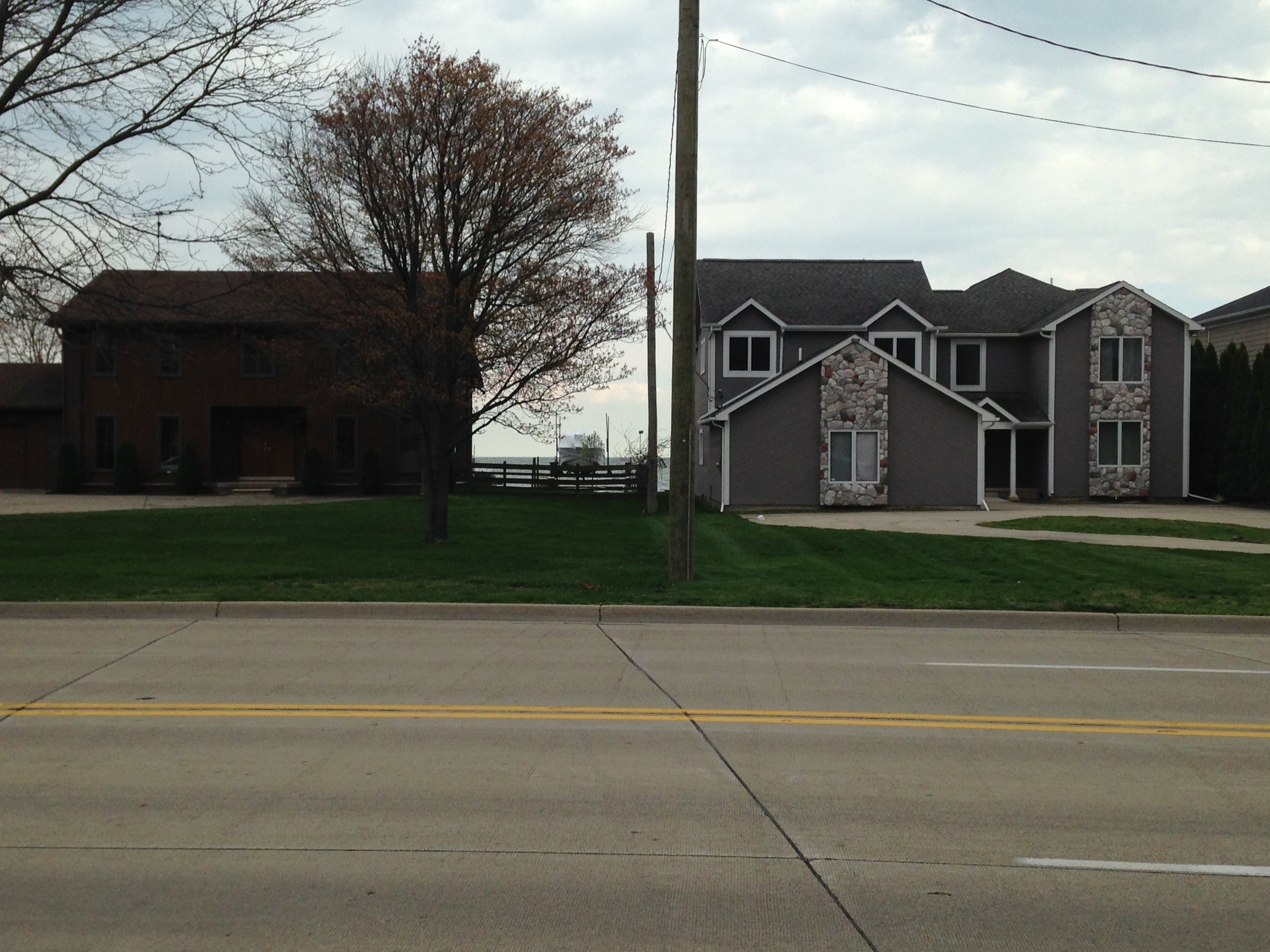Jefferson Avenue
April 17, 2017
Along with Woodward Avenue, Jefferson was one of the first two roads laid out after the Detroit fire of 1805. It cuts a straight path in the city then meanders along the edge of the Detroit River and Lake St. Clair. Early on an overcast spring morning, I set out from Hart Plaza, and walked briskly past the Renaissance Center, the world headquarters of GM. Downtown quickly fell away, as Jefferson transformed into just another commercial street, dotted with empty lots and a few apartment buildings. Occasionally I glimpsed the Detroit River in the spaces between the buildings on my right. A few people passed by jogging or biking. The U.S. Detention and Deportation Center loomed up, and then fell behind. I texted a pic of my friend’s studio/gallery storefront in the Jefferson Chalmers neighborhood. And after only a few hours, I reached the border to the suburbs.
Alter Road did not need the clear and prominent signage to indicate that another zone was being entered. The size of the houses and their lots, the manicured lawns and bushes, the disappearance of commercial businesses -- all indicated another socioeconomic demographic. The set of four Grosse Pointes that Jefferson Avenue passes through – Grosse Pointe Park, Grosse Pointe, Grosse Pointe Farms, Grosse Pointe Shores – together with an inland fifth, Grosse Pointe Woods, make up some of the wealthiest municipalities in the U.S. I had been told that this is where the “old money” lived. At one point, realtors and homeowners worked together to rate potential homebuyers on race, nationality, occupation, and “degree of swarthiness,” with Jews, southern Europeans, and Poles requiring different cutoff numbers in order to be accepted. African Americans and Asian Americans were excluded entirely.
I felt conspicuously Asian walking here. White women went by in both directions, walking or exercising. Some smiled, a few said hello, most of them ignored me. I didn’t have it in me to greet them proactively.
It was still early spring in Detroit, so the trees were bare. I was fascinated by the bare branches limned against the sky. I was equally fascinated by the houses. I would pass one house -- a wholly inadequate term for their size -- and think they couldn’t get bigger, then I’d pass an even larger house.
After passing the Edsel and Eleanor Ford House, the estate of Henry Ford’s son, I could tell without looking at the map or my research that I was in a different kind of place. The houses shrank from mansions to bungalows. There were even more pedestrians here, young people jogging in groups, kids on bicycles. They were also all white.
People have asked whether I felt safe while walking. The most unsafe I felt was in this suburb of St. Clair Shores, passing a house flying a banner with: “If you can’t get behind our troops, feel free to stand in front of them.” As someone from a country whose people have stood both behind and in front of U.S. troops, I felt viscerally targeted.
I was happy to come across a library though. I’ve always loved libraries, and I needed a bathroom. As I entered, a young white boy around five years old looked at me curiously. Perhaps it was my dress, perhaps it was me. I quickly walked around his gaze, first feeling defensive, and then needled by my reaction to this white child. Within those seconds, my library feeling of well-being was shattered.
A short while later, I stopped at a cafe. I ordered a bagel sandwich and plugged in my phone, then tried to dispel the surreal sense that came over me. I had climbed mountains for days, trekked through snowy tundras for weeks -- how could others be simply hanging out at a cafe? I wonder whether this was how veterans felt, coming back from war to grocery shopping, paying bills, traffic.
Harrison Township felt almost rural, with scattered housing developments and sidewalks disappearing into grass. I passed a soccer game of Latinx kids in bright uniforms, their parents watching and cheering like parents of all races. Trim condo complexes advertised themselves, then a more ragged set of businesses advertised fishing tackle and boats.
I finally reached the metropark, my endpoint, and posed for photos. It had been a strange day of extremes, clearly visible in the built environment, and clearly felt in my body.
Sources:
Reynolds Farley, Sheldon Danziger and Harry J. Holzer. Detroit Divided. Russell Sage Foundation, 2000.
http://detroiturbanism.blogspot.com/2016/06/radial-avenues-part-i-jefferson.html











